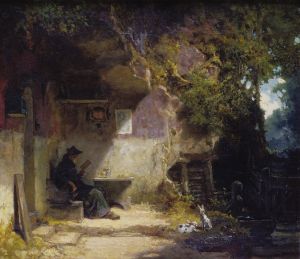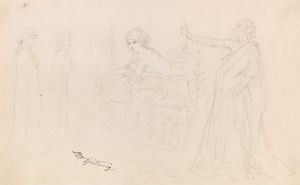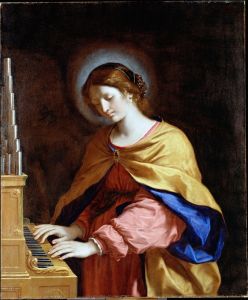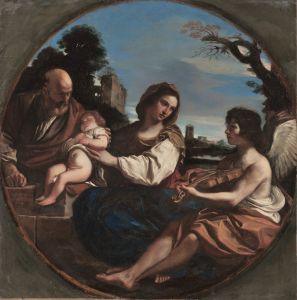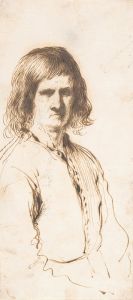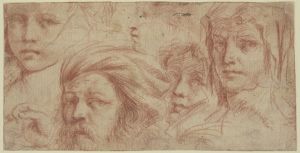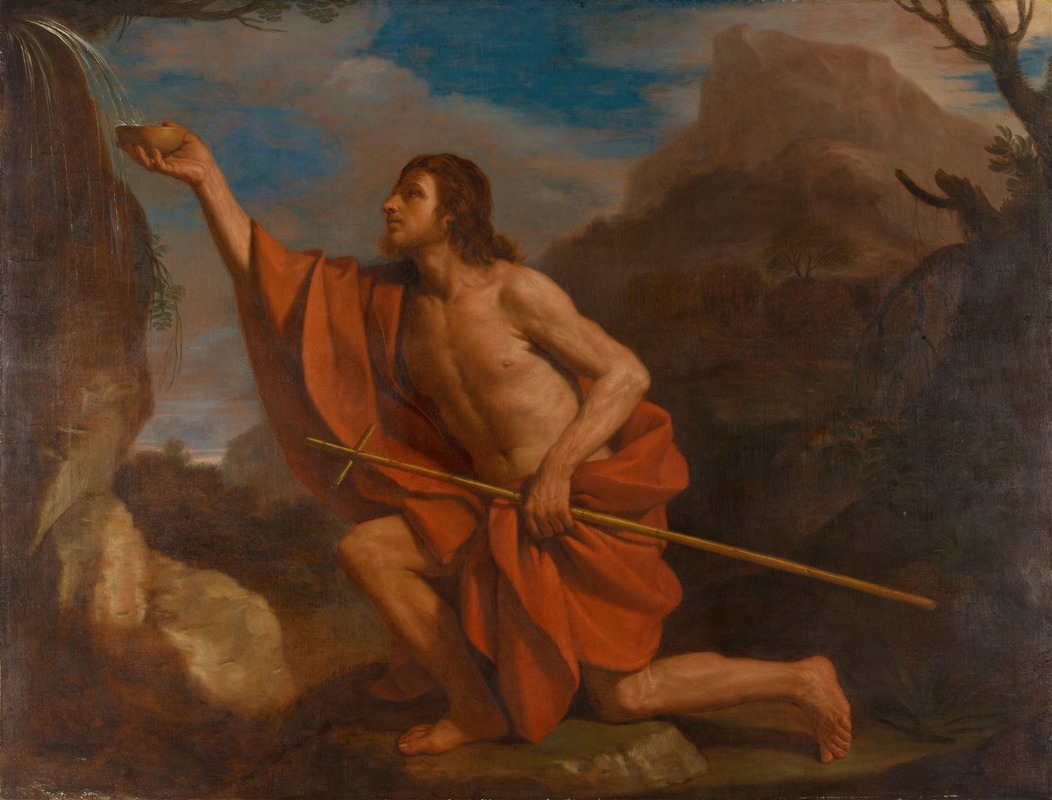
Saint John the Baptist in the Wilderness
A hand-painted replica of Guercino’s masterpiece Saint John the Baptist in the Wilderness, meticulously crafted by professional artists to capture the true essence of the original. Each piece is created with museum-quality canvas and rare mineral pigments, carefully painted by experienced artists with delicate brushstrokes and rich, layered colors to perfectly recreate the texture of the original artwork. Unlike machine-printed reproductions, this hand-painted version brings the painting to life, infused with the artist’s emotions and skill in every stroke. Whether for personal collection or home decoration, it instantly elevates the artistic atmosphere of any space.
Saint John the Baptist in the Wilderness is a painting by the Italian Baroque artist Giovanni Francesco Barbieri, commonly known as Guercino. Created in 1640, this oil on canvas work is one of Guercino's notable depictions of Saint John the Baptist, a recurring subject in Christian art. The painting is currently housed in the Nelson-Atkins Museum of Art in Kansas City, Missouri, United States.
The artwork portrays Saint John the Baptist as a solitary figure in a wilderness setting, a common theme in representations of the saint. He is depicted seated, with a contemplative expression, holding a reed cross, a traditional symbol associated with his role as the forerunner of Christ. The lamb at his side symbolizes Christ, often referred to as the "Lamb of God" in Christian theology. The wilderness background is rendered with a sense of depth and naturalism, characteristic of Guercino's mature style.
Guercino's use of chiaroscuro, the dramatic contrast between light and shadow, is evident in this painting. The light falls on Saint John's figure, emphasizing his spiritual significance and drawing the viewer's attention to his serene yet introspective demeanor. The artist's skillful handling of color and texture further enhances the emotional and spiritual resonance of the work.
This painting reflects the Baroque era's emphasis on drama, emotion, and naturalism. Guercino, who was active during the 17th century, was known for his ability to convey human emotion and divine presence through his art. His works often combined dynamic compositions with a sense of intimacy and realism, qualities that are evident in "Saint John the Baptist in the Wilderness."
The painting was created during a period when Guercino had transitioned from his earlier, more dynamic style to a calmer and more classical approach influenced by the Bolognese School, particularly the works of Guido Reni. This shift is reflected in the balanced composition and restrained emotional tone of the piece.
"Saint John the Baptist in the Wilderness" is considered an exemplary work of Guercino's later period and continues to be appreciated for its artistic and spiritual depth. It remains a significant piece within the collection of the Nelson-Atkins Museum of Art, contributing to the understanding of Baroque art and religious iconography.





